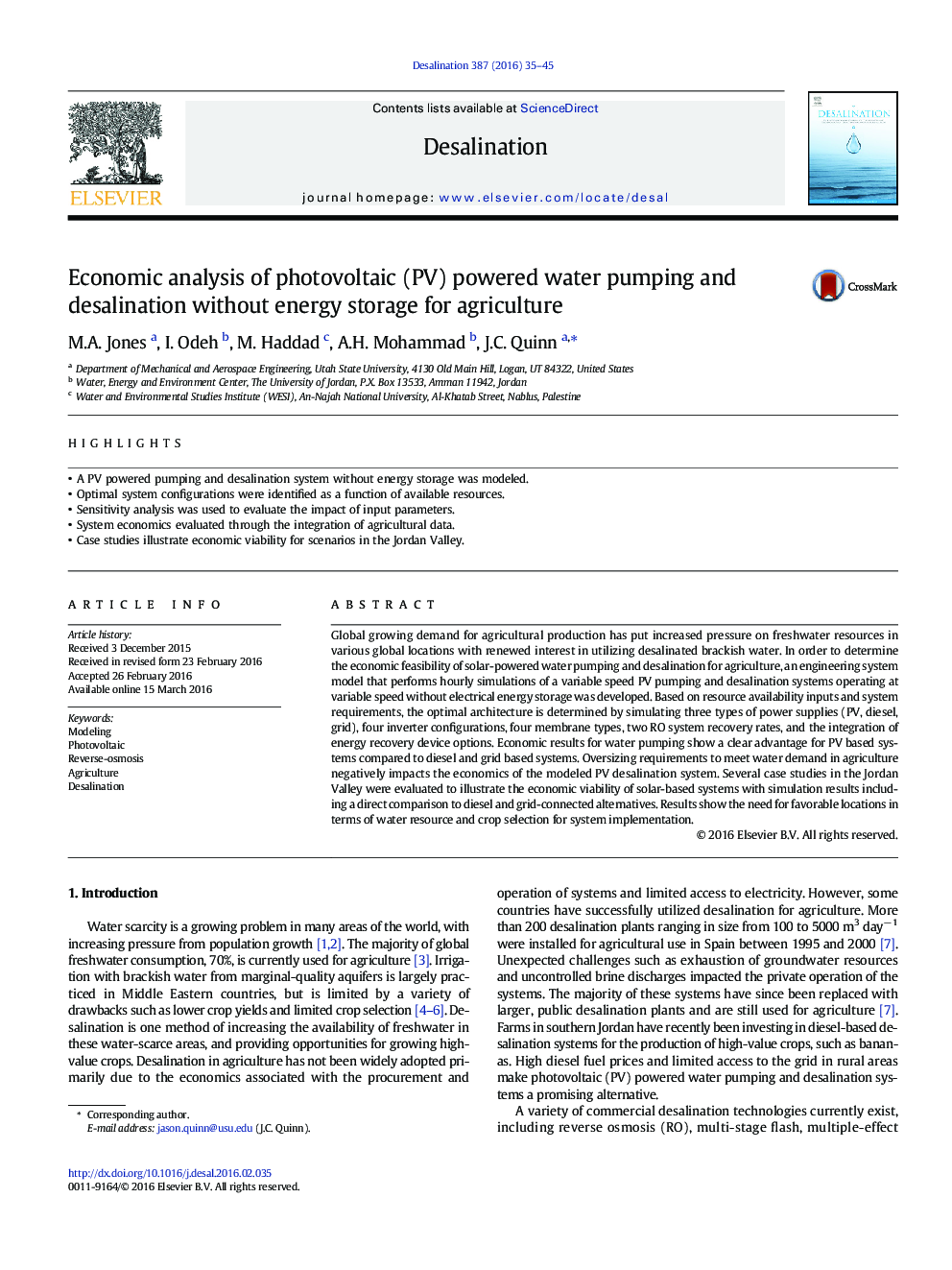| Article ID | Journal | Published Year | Pages | File Type |
|---|---|---|---|---|
| 622887 | Desalination | 2016 | 11 Pages |
•A PV powered pumping and desalination system without energy storage was modeled.•Optimal system configurations were identified as a function of available resources.•Sensitivity analysis was used to evaluate the impact of input parameters.•System economics evaluated through the integration of agricultural data.•Case studies illustrate economic viability for scenarios in the Jordan Valley.
Global growing demand for agricultural production has put increased pressure on freshwater resources in various global locations with renewed interest in utilizing desalinated brackish water. In order to determine the economic feasibility of solar-powered water pumping and desalination for agriculture, an engineering system model that performs hourly simulations of a variable speed PV pumping and desalination systems operating at variable speed without electrical energy storage was developed. Based on resource availability inputs and system requirements, the optimal architecture is determined by simulating three types of power supplies (PV, diesel, grid), four inverter configurations, four membrane types, two RO system recovery rates, and the integration of energy recovery device options. Economic results for water pumping show a clear advantage for PV based systems compared to diesel and grid based systems. Oversizing requirements to meet water demand in agriculture negatively impacts the economics of the modeled PV desalination system. Several case studies in the Jordan Valley were evaluated to illustrate the economic viability of solar-based systems with simulation results including a direct comparison to diesel and grid-connected alternatives. Results show the need for favorable locations in terms of water resource and crop selection for system implementation.
